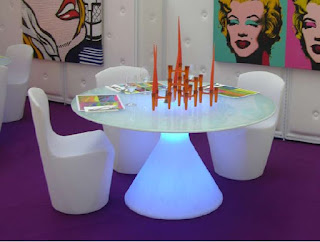Plants adapted to using bats or moths as pollinators usually have white petals and a strong scent, while plants that use birds as pollinators tend to develop red petals and rarely develop a scent (few birds have a sense of smell).
The largest managed pollination event in the world is in Californian almond orchards, where nearly half (about one million hives) of the US honey bees are trucked to the almond orchards each spring. New York's apple crop requires about 30,000 hives.
The Chinese orchid, Cymbidium serratum, is pollinated by the wild mountain mouse Rattus fulvescens and in fact this rodent is the only pollinator of this particular orchid. Another plant pollinated by rodents is the Leucospermum. Some varieties have flowers growing near the ground so that mice attracted to the nectar get covered in pollen and pass it on to the next plant.
The leucospermum, known as the pin-cushion plant, is often used in tropical office flower displays for its appearance and longevity. The picture on the home page of http://www.plantdisplayhire.com/ shows a beautiful combination of leucospermum with protea and tropical ginger.
Lilies from the wholesaler are wrapped in bunches of ten stems. They are stored in cold rooms but packed dry in boxes. The flowers are tight buds at this stage with the colour not yet visible. When placed in water, the flowers open and are then more delicate to handle and bruise easily. With the flower showing, the five long stamens complete with tiny oval anther are visible. The anther contain the pollen and although these from part of the beauty of the flower they will stain clothing or furniture if brushed against and should be removed. Another reason for removing the anther is that they are very poisonous to cats.
The single style in the middle of the stamen carries the stigma at the tip. This is where the pollen from flowers is received. The stigma from a crocus, the Crocus sativa, when dried is called saffron and has been used as a seasoning, fragrance, dye, and medicine for more than 3,000 years.
Saffron is native to Southwest Asia but was first cultivated in Greece. It slowly spread throughout much of Eurasia, later reaching parts of North Africa, North America, and the Pacific islands.
Saffron cultivation came to Britain in the 14th century but only survived in the light, well-drained, and chalk-based soils of the north Essex countryside. Indeed, the Essex town of Saffron Walden got its name as a saffron growing and trading centre. Its name was originally Cheppinge Walden and the name was changed to show the importance of the crop to the local area; and today the town's arms feature crocus blooms.




